The stronger a nonprofit’s visual brand, the more likely they are to get donations, meet goals and make an impact. Artists love when they get the chance to design for good, and working with nonprofits to build out their visual branding is an excellent way to help make an impact. So let’s get into why visual branding is so important for nonprofits and how to get the most out of it.
First and foremost, branding for nonprofits builds trust
—
Think about a company whose website is really user-friendly and visually attractive. Then think about a time you were searching for something on the internet and came across a website that looked incomplete—maybe it lacked images and a cohesive color scheme, maybe it wasn’t user-friendly or maybe it was unclear what exactly the website was for. Whatever it was, you probably only stayed on that site very briefly before going elsewhere to find what you needed. That’s all because of trust. And branding builds trust.

When a company has good visual branding and a clear mission, people trust that they know what they’re doing and supporters trust that their money is in good hands. And when organizations fail to communicate who they are and show what they do, we don’t trust them. This is why strong visual branding is especially imperative for nonprofits.
Branding leaks into every area of an organization’s presence: having a well-put-together brand shows you mean business; a strong, user-friendly website can help prove you’re legitimate; and informative social media posts about your mission can show you know what you’re talking about. The key thing is making sure your identity is consistent across platforms.
3 ways good visual branding supports nonprofits
—
1. It fosters the right community
Having a strong brand identity can help attract the right community you want to support your mission. You want to foster a community of people who are interested in and dedicated to the same mission you’re after.
In a 2022 survey we did with 471 senior decision makers at nonprofits across North America, the UK, Australia and New Zealand, we found that 93% of nonprofits believe a strong brand identity has a positive impact on donor engagement. And more than two-thirds of charities (68%) say a strong visual brand increases volunteer interest.
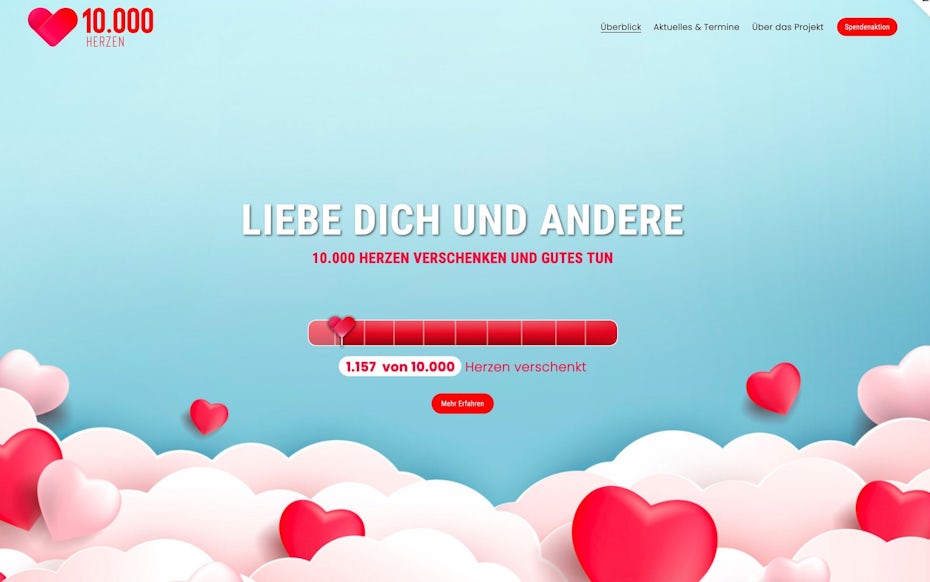
People who choose to design for good aren’t doing it for the money—they’re doing it because they believe in a nonprofit’s mission. You want to attract skilled people who know what they’re doing. You need strong employees to make an impact, and branding can help you prove you’re worth believing in and worth dedicating time to. The bottom line: having a strong team and making the impact you desire, is easier when your organization looks professional.
2. It elevates your mission statement into a brand
Branding can bring your message to the next level. Rather than thinking of your color palette, imagery and typography as features separate from your nonprofit’s mission personality, think of them as a team. Your brand visually communicates your mission and the way you communicate your mission can elevate your brand.
You can strengthen your mission by creating content that helps your supporters see the impact you want to make. Say you’re working for a nonprofit like The Red Cross, you can use TikTok to advertise drives for supplies for families in need, or show the hard work volunteers are doing behind the scenes.
If your nonprofit was Planned Parenthood, you could make Instagram posts giving people tips on safe practices or providing valuable reproductive-health information. This helps you to build trust with the communities you help.
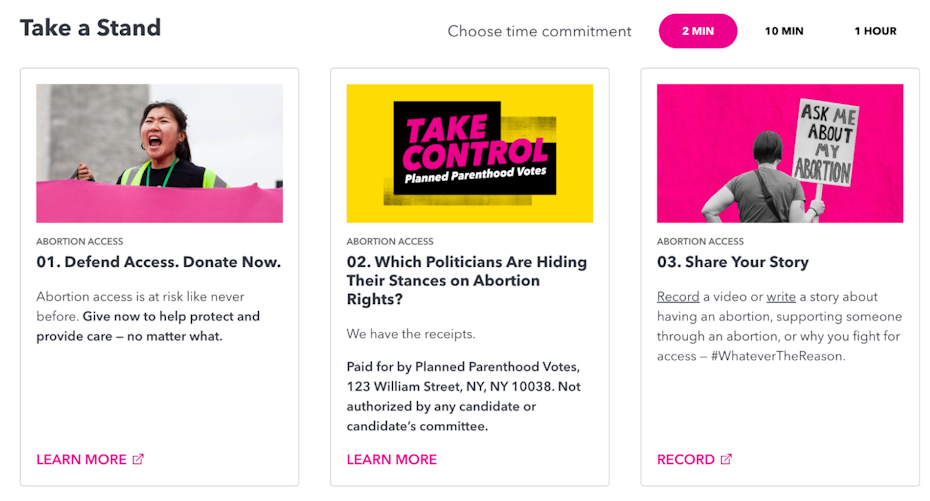
If your nonprofit works to provide meals for less-fortunate families, your color scheme could be vibrant health-food colors like green and orange to emphasize your positive impact, rather than a dark color scheme that could make supporters feel sad and discouraged by all the upsetting reasons a nonprofit like yours has to exist.
If there’s information your nonprofit wants to highlight on the website or flyers, you can choose large, bold fonts and keep contact information separate, in a smaller, more professional font.
There are tons of ways to accompany your message with visuals that help your supporters see the impact you want to make. Let your strong brand identity do the more subtle communicating so you can elevate your message and show onlookers it’s worth listening to.
3. It shines a light on you above competitors
As a nonprofit, you want to search for some competitors that are working towards similar goals. Look at their websites and any published articles about projects they’ve completed or awards they’ve been given. You might even be able to look at some of their leaders on Linkedin and get an idea of what backgrounds they have in common and where they’re coming from. You want to research what they’re doing and how they’re doing it.
Answer the following questions:
- What services do they offer?
- How are your missions the same?
For example: if you’re both serving the same community, their nonprofit might lean into providing healthcare services whereas your nonprofit works to provide educational materials.
By looking into what similarly positioned organizations offer, you can really define how your mission and what you’re doing to make it come to life are unique. After you’ve done the research and identified what others in your space are doing, focus on how you’re going to achieve your mission’s goals, and how you can use your visual brand design to communicate that to the world.

People are drawn to aesthetics and design that are eye-catching and evoke an emotional connection. Use your brand design to create this connection with your audience and stand apart from the competitors you researched. If you’re a nonprofit dedicated to helping the planet, you can use variations of green on your site and as your font colors to enhance this connection and inspire people to imagine a greener planet, one aligned with your mission. Or if you’re a nonprofit working towards a cause relating to mental health, you could use blue tones to promote calmness and dependability.
You can use images that show rather than tell people about your mission. As a nonprofit, it’s better to use photographs versus illustrations to show the real impact you’re making and leverage that to gain supporters. This is one of the best ways to separate yourself from competitors because you can present the changes you’re making that are specific to your nonprofit and the work you aim to do. Even if other nonprofits are working towards similar goals, you’re showing your nonprofit gets things done.
Your brand will help others define what makes you different, so let’s find out how to use it to your advantage…
6 steps to build succinct, engaging visual branding for nonprofits
—
1. Hone in on your mission and desired impact
Think about exactly what you want to accomplish and envision it. You can’t support every mission. You have to be precise about what exactly it is you’re hoping to change. And the more concise and transparent you can be, the more genuine support you’re going to receive and the more organized you’ll appear.

Stay consistent with your color schemes, typography and photography to show people you’re focused on one, specified impact. You can also do this through progress pictures to prove donations are going to good use!
2. Think about appealing to the 5 senses
Your brand should show people what you’re about. It should create a feeling. For example, if your mission is to clean up beaches, you can show people the problem you’re up against, but you can also use words, colors, and fonts to allow them to practically smell the salty air, feel the soft sand between their toes and imagine a clean, beautiful beach.
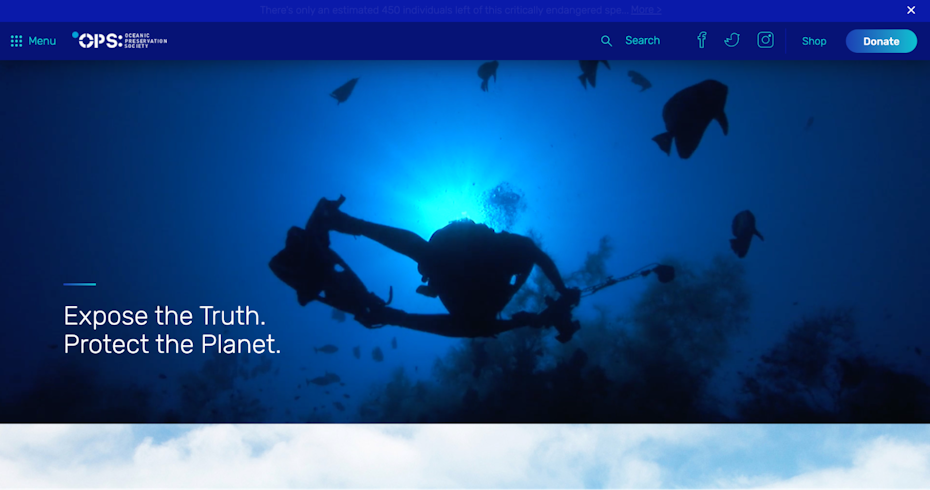
The Oceanic Preservation Society uses video clips of whales and other aquatic life swimming as their background on their website homepage, making you feel immersed in life under the water. Get creative with how you can bring real-life experiences into your visual brand– it can be as simple as using cursive writing to replicate the movement of waves.
3. Decide your color palette and fonts
Your colors and fonts are a big decision. They’ll dictate how you design everything from your website to your social media posts. You want to pick a range of colors that support the feeling you want your supporters to get when they come across your marketing materials.
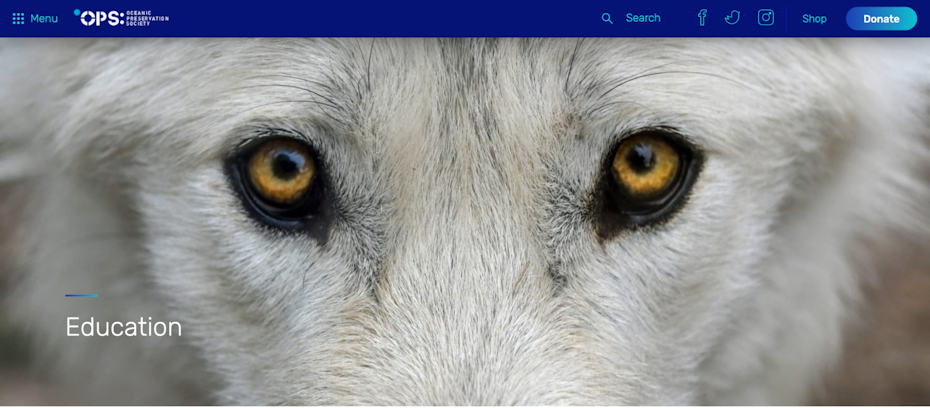
One of the easiest ways to do this is to go to a website builder or logo maker online and play around with templates. See what catches your eye under each category. Start picking which colors go well together and align with your mission in a positive light. Once you decide on your colors and fonts, keep track of them in a document and start your brand’s style guide.
4. Create a logo
Your logo is as important as the name of your nonprofit. It’s what people are going to be able to identify you with. Make sure it’s attractive and inviting. If your budget is tight right now, you can try out initial ideas or get one for free online with a D-I-Y option, such as Logomaker by Vista. Experimenting with one of them either before (or instead of) working with a designer helps you to analyse how different styles visually add to your mission.

5. Build a captivating, user-friendly website
Think back to the two different websites we talked about above. You want your website to show you’re trustworthy! And you want your website to be as user-friendly as possible so people can easily donate to your mission and engage with you seamlessly. Squarespace is one of the many great, easy-to-use hosting sites for building a website.

They have tons of templates to choose from and most features are as simple as drag-and-drop where you want pictures and text to go. You’ll have to invest a small amount of money to keep your site up and running, but they have a wide-range of options that can align with whatever your budget may be.
6. Keep your branding consistent
Having a strong brand identity is done by keeping everything consistent. People need to be able to easily identify you based on your colors and logo. And the more consistent you are, the more organized, professional and trustworthy you appear to potential partners.
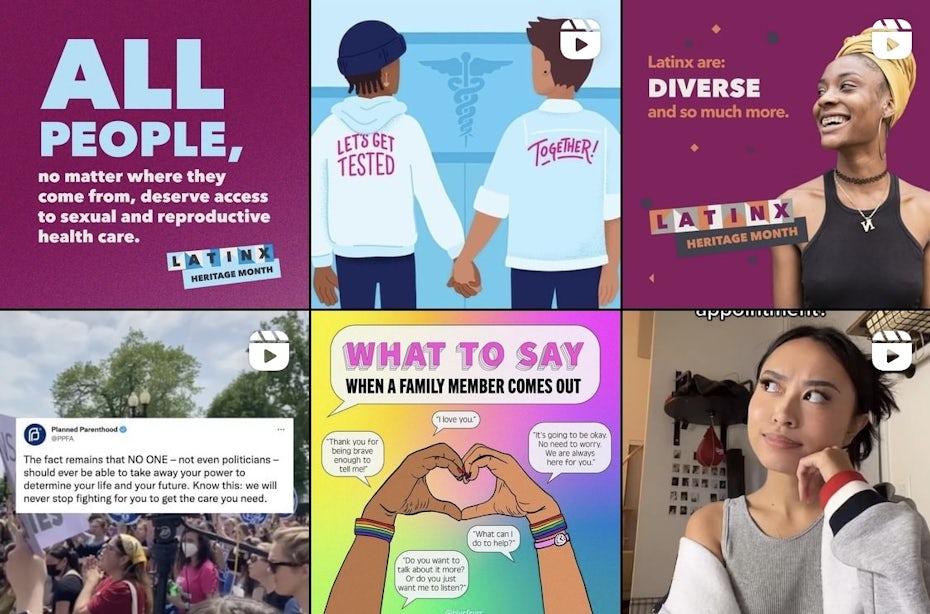
One of the best ways to engage people, keep things consistent and get a lot out of the content you want to produce is reusing content across multiple platforms. For example, your nonprofit could write a long, informative blog post and then use key points from the article to create materials for Instagram, Linkedin and other social media platforms.
7. Use merchandise as a way to promote your nonprofit and get donations
Creating merchandise is a great way to stay in line with your brand, raise money, and expand your audience. A great example of leveraging merchandise to get more donations is The National Breast Cancer Foundation. In light of Breast Cancer Awareness Month, this nonprofit created merchandise for people to support the mission and wear their support proudly. They’re also a great resource to look to for branding inspiration– they have everything from a visual calendar on their site with events to pink ribbons and pink-themed branding to embody their support for women.
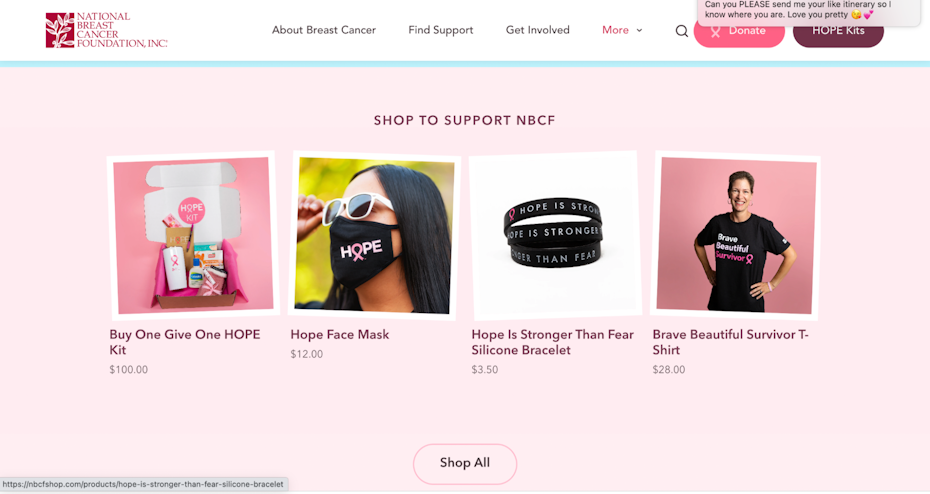
Prioritize your nonprofits visual branding; starting now
—
Visual branding is just as important for nonprofits as it is for for-profit companies. Visual branding can help prove that you’re trustworthy, dedicated and professional. It’s one of the most important aspects to leverage if you want to build connections with your audience, receive donations and expand your impact.



